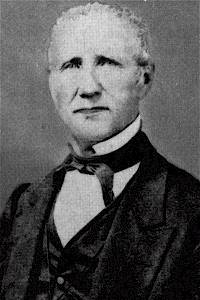Related Research Articles

A hymn is a type of song, usually religious, specifically written for the purpose of adoration or prayer, and typically addressed to a deity or deities, or to a prominent figure or personification. The word hymn derives from Greek ὕμνος (hymnos), which means "a song of praise". A writer of hymns is known as a hymnist. The singing or composition of hymns is called hymnody. Collections of hymns are known as hymnals or hymn books. Hymns may or may not include instrumental accompaniment.

Bremen is a city in Haralson and Carroll counties, Georgia, United States. As of the 2010 census, the city had a population of 6,227, up from 4,579 at the 2000 census. Most of the city is in Haralson County, with a small portion in Carroll County.

Shape notes are a musical notation designed to facilitate congregational and social singing. The notation, introduced in late 18th century England, became a popular teaching device in American singing schools. Shapes were added to the noteheads in written music to help singers find pitches within major and minor scales without the use of more complex information found in key signatures on the staff.

Sacred Harp singing is a tradition of sacred choral music that originated in New England and was later perpetuated and carried on in the American South. The name is derived from The Sacred Harp, a ubiquitous and historically important tunebook printed in shape notes. The work was first published in 1844 and has reappeared in multiple editions ever since. Sacred Harp music represents one branch of an older tradition of American music that developed over the period 1770 to 1820 from roots in New England, with a significant, related development under the influence of "revival" services around the 1840s. This music was included in, and became profoundly associated with, books using the shape note style of notation popular in America in the 18th and early 19th centuries.

The National Missionary Baptist Convention of America (NMBCA) is an African-American Baptist convention.
A singing school is a school in which students are taught to sightread vocal music. Singing schools are a long-standing cultural institution in the Southern United States. While some singing schools are offered for credit, most are informal programs.

William Walker was an American Baptist song leader, shape note "singing master", and compiler of four shape note tunebooks, most notable of which are the influential The Southern Harmony and the Christian Harmony, which has been in continuous use.

Benjamin Franklin White was a shape note "singing master", and compiler of the shape note tunebook known as The Sacred Harp. He was born near Cross Keys in Union County, South Carolina, the twelfth child of Robert and Mildred White.
The East Texas Musical Convention, now usually called the East Texas Sacred Harp Convention, is an annual gathering of shape note singers. Songs are sung a cappella from the Sacred Harp tunebook. The Convention was organized in 1855, and is the oldest Sacred Harp convention in Texas, and the second oldest in the United States. The East Texas Convention was modeled after the older Southern Musical Convention established in 1845 by Benjamin Franklin White, the compiler of The Sacred Harp.
Wilson Marion Cooper of Dothan, Alabama, was a notable musician and music teacher within the Sacred Harp tradition. Marion Cooper was born in Henry County, Alabama, the son of W. S. and Elizabeth Ann (Oates) Cooper. He was a cousin of Alabama governor William C. Oates.
James Landrum White was a shape note singing teacher, composer, and a reviser of his father's shape note tunebook known as The Sacred Harp.
Joseph Stephen James, of Douglasville, Georgia, was a lawyer, community leader, shape note singer, composer, and a reviser of the tunebook known as The Sacred Harp.
David Patillo White (1828–1903) was a shape note singing teacher, composer, and a co-issuer, with his father, of the 1870 Sacred Harp. He was the second child of Benjamin Franklin White and Thurza Melvina Golightly, whose other children were William Decatur, Robert H., Mary Caroline, Nancy Ogburn, Thurza Melvina, Benjamin Franklin, Jr., James Landrum, and Martha America.
The Southern Musical Convention was the first Sacred Harp musical convention, organized by B. F. White and others in 1845. It was formed at Huntersville in Upson County, Georgia.
The Chattahoochee Musical Convention is a Sacred Harp singing convention. It is an annual gathering whose purposes are worshiping our Lord through the singing of Sacred Harp music and fostering of bonds of fellowship among singers. It bears the distinction of being the oldest surviving Sacred Harp musical convention, having been founded in 1852.
The Christian Harmony is a shape note hymn and tune book compiled by William Walker. The book was released in 1866. It is part of the larger tradition of shape note singing.

The Princeton Nassoons are a ten to twenty-member low-voice a cappella group at Princeton University. The group has been officially self-selecting since 1941, although the original group is known to have sung together as early as 1939. The Nassoons are the oldest a cappella group at Princeton University.

Hugh McGraw was a leading figure in contemporary Sacred Harp singing. He was the General Chairman of the committee that created the 1991 Denson revision of The Sacred Harp and played an important role in promoting the spread of Sacred Harp singing. Sacred Harp scholar Buell Cobb has called him "perhaps the chief promoter and good will agent of Sacred Harp music".

McMahan is an unincorporated community in Caldwell County, in the U.S. state of Texas. According to the Handbook of Texas, the community had a population of 125 in 2000. It is located within the Greater Austin metropolitan area.
Jarusha Henrietta Denson Edwards, better known as Ruth was a figure in the Sacred Harp movement.
References
- The Sacred Harp: a Tradition and Its Music, by Buell E. Cobb ISBN 0-8203-2371-3
- White Spirituals in the Southern Uplands, by George Pullen Jackson ISBN 0-486-21425-7